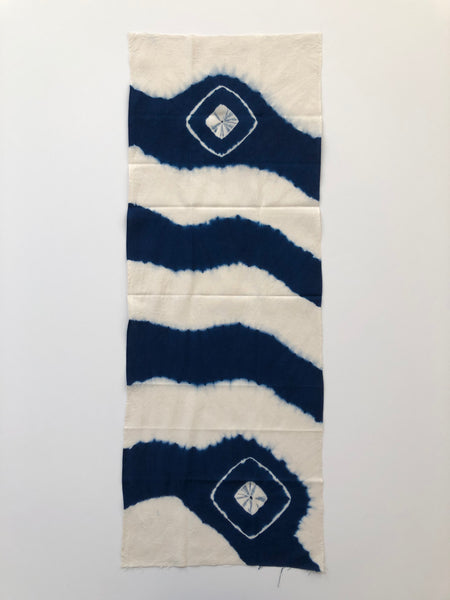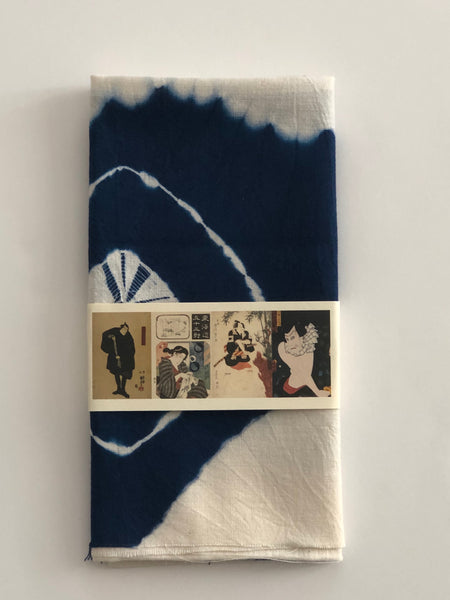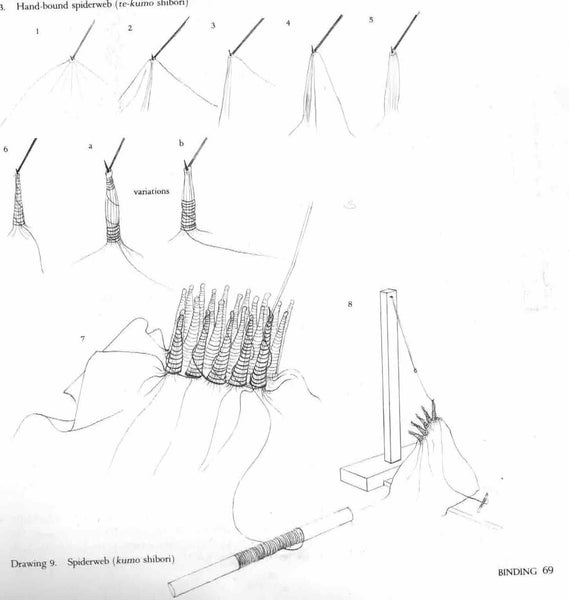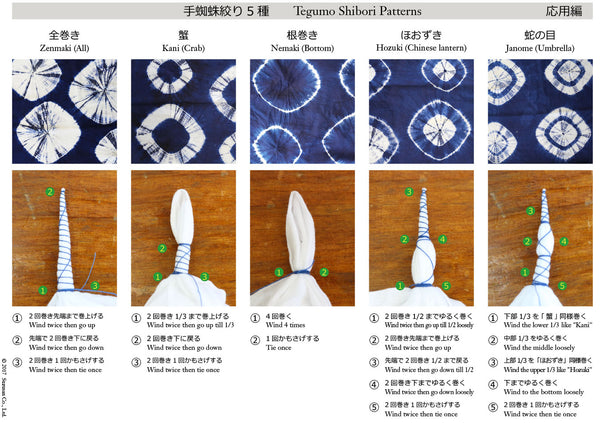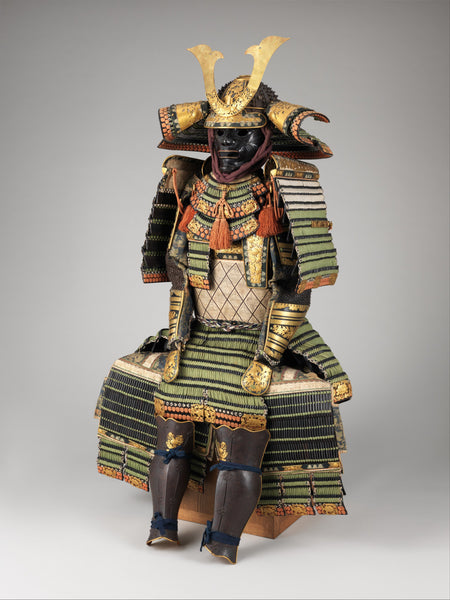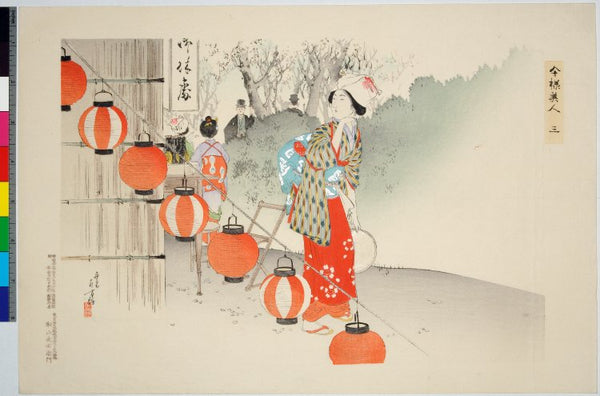Yoroidan with Houzuki Boushi Shibori Tenugui
**If you are interested in a sold out tenugui, please email staff@yoshikowada.com to request a notification when it will be in stock. Production and delivery of certain tenugui can take up to one month from Arimatsu, Japan.
Bound-resist & stitch-resist bands with Chinese lantern plant pattern
Technique: Boushi Shibori - Capped motif binding thread resist / Kumo Shibori - A slightly moistened cloth is caught on a hook made specifically for this type of shibori. The cloth is then pulled taut by the hook and drawn evenly into folds around it. The shaped cloth is held firmly while thread is bound in even spaces from the base of the unit, where the gathered folds are held, to the top near the hook. The thread is brought back to the starting point at the base by making several turns around the bound cloth. The thread is neither knotted nor cut but is carried to the next unit. Process illustrations are from the book “Shibori: The Inventive Art of Japanese Shaped Resist Dyeing” by Wada, Rice, and Barton. (c)1983
Pattern: Houzuki - Chinese Lantern plant / Yoroidan - Stripes (literally “great armor”), derived from yoroi or Ō-yoroi, a type of plated samurai armor from feudal Japan. ' Ō-yoroi were visually recognizable from the horizontally striped pattern created by plated scales laced horizontally over an armor plate. The stripe design and colors of the scales often represented a samurai’s rank and clan.
Color: Indigo/White
Approximately 1m x 35cm (39in x 13in)
100% Cotton
Handmade in Arimatsu, Japan
Tenugui are scarf-size, all-purpose towels made of lightweight cotton, used in Japan for centuries and recently popularized and collected because of their beautiful patterns and graphic designs.
Ukiyo-e example: Mizuno Toshikata (19th Century)
View the full shibori tenugui collection
SFS SHOP
All sales are final. No returns or refunds.
Slow Fiber Studios is not responsible for lost or stolen packages. Please contact your local post office with your tracking number to resolve any issues with delivery.
Please allow up to five days from the original purchase date for Slow Fiber Studios staff to process orders.
International Customers
USPS First Class International shipping does not include tracking service. Please use Priority Mail International or higher to guarantee tracking to the destination.
Slow Fiber Studios is not responsible for packages held or confiscated at customs. Customs may delay your package delivery significantly. Some countries may require in-person pickup or charge fees before releasing your package. The customer is responsible for any customs fees. Using Priority Mail International or higher is more likely to expedite your package.
Wholesalers
Wholesale prices are available for select shop items. Please enquire with staff@yoshikowada.com for product information, prices, and terms.
Symposium Ticket Purchasing Policy
If cancellation notice for registration is received by the World Shibori Network Foundation on or before 31 May 2026 (00:00, Pacific Standard Time), ticket holders receive a full refund of the registration fee minus $50 for administrative costs.
If registration is cancelled on 1 June through 31 July 2026 (00:00, Pacific Standard Time), ticket holders receive a 50% refund on their registration fee.
If registration is cancelled on 1 August through 25 September 2026 (00:00, Pacific Standard Time), no portion of the registration fee will be refunded.
Cancellation requests due to visa, medical, or personal emergencies will be evaluated on a case-by-case basis. If accepted, ticket holders receive a full refund of the registration fee minus $50 for administrative costs. In all such cases, please email us with a medical or administrative letter on behalf of the reason to info[at]shibori[.]org to discuss your case.
Should the Organizers cancel the event, ticket holders will receive a full refund.
*All 12 ISS notices emailed to info[at]shibori.org









